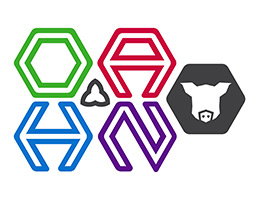OAHN Swine Network Research Project: Modelling potential hotspots of African Swine Fever in Ontario’s wild pig population

Project Lead: Erin Koen
Publication and full report: Predicting high-risk areas for African swine fever spread at the wild-domestic pig interface in Ontario
Wild pigs (Sus scrofa) are one of the most invasive and destructive mammals worldwide. We use the term wild pig to refer to any type of pig outside of a fence, including wild boar, domestic pigs, and hybrids of the two. Wild pigs act as vectors and reservoirs of many diseases, including African Swine Fever (ASF), a highly lethal and contagious viral disease that affects both wild and domestic swine. ASF is not present in North America, but wild pigs play a significant role in the spread of ASF in geographic locations where the disease is present. Planning and preparedness will ensure that swift action can be taken to control ASF if it is introduced into North America. At present, data from Ontario suggest that wild pig sightings in the province do not represent an established, breeding population; rather, reports indicate a number of pigs that have recently escaped captivity. Any pig outside of a fence, however, is capable of carrying and transmitting disease.
We used a network to predict the highest risk areas for ASF spread in Ontario given the distribution of wild pig sightings and other risk factors for wild pig presence and movement on the landscape. We used network nodes to represent the presence of at least one domestic pig farm in a hexagon (5 km radius), and weighted network edges by the probability of ASF virus movement among farms via movement of wild pigs.
Our network models predicted that central Ontario has relatively high network closeness, suggesting that this area has a relatively high risk of virus exposure. Central and eastern Ontario had the highest predicted network betweenness, suggesting that these areas are important for controlling virus flow across the province. We detected 10 communities or clusters within the overall network, where nodes were highly connected locally and relatively less connected to the rest of the network.
We showed that at a landscape scale, there are parts of Ontario that have a higher risk of exposure to the ASF virus if it is introduced because of their position in the network. These areas also tend to have a high density of pig farms, suggesting that at a more local scale, places with a higher risk of exposure could also infect a larger number of premises.
Predicting areas with a high risk of exposure to the ASF virus due to wild pig movement in Ontario will guide managers on where to focus surveillance for ASF in the wild pig population and where to heighten biosecurity within commercial and backyard pig farms, ensuring that managers are prepared to act quickly to limit spread of ASF if the virus is introduced.

